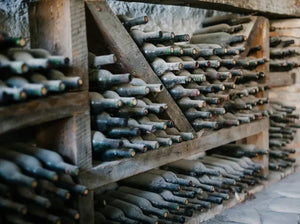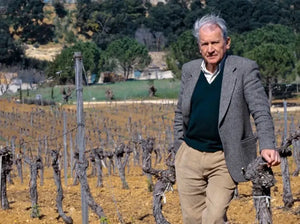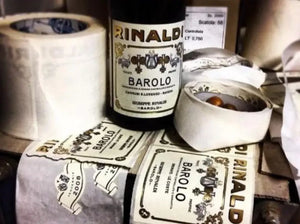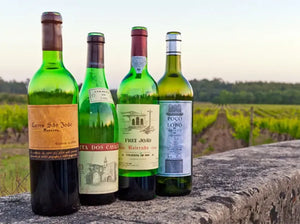Blog » Vintage
-
The Old Rioja Cellar: Private Selections from WineWiseWinter always marks a dramatic shift in the wines we begin to reach for. Many regions that have largely sat on the bench during the sweltering months have eagerly anticipated their call up to the plate. January also coincides with one of the very most exciting releases of the year––The Rioja Cellar.Hiram Simon's WineWise, the official California importer of Lopez de Heredia, visits private cellars each year in and around Rioja. There, he tastes and acquires aged wines from the deepest and most serious cellars in the region. I gave my order request last year based on his tastings, and today, these pristine Tempranillo-based Rioja gems are in stock and ready to ship.Over the last two years, the highlight of Hiram's selections, for me personally, is in these more relatively modestly priced wines. This is always such a rare opportunity to taste one of the world's most classic and age-worthy regions with simply perfect provenance. As mentioned, these wines have been aged in cellars in and around Rioja since their initial release.Note: Gran Reserva (sp.) is part of a nomenclature implemented in 1982. Before that, the Reserva wines were all non-vintage and denoted as 6º Año, in the case of Tondonia. Any wine called Cosecha is by nature the wine subsequently marketed as Gran Reserva.
Photo Credit: Julia Volk
-
Languedoc's Jewel: Mas de Daumas Gassac
Outside of the iconic Cabernet Sauvignon addresses in Bordeaux, there's one name in France that can go toe to toe with these chateaux: Mas de Daumas Gassac. As always, the provenance of older wines is a critical factor in the quality you'll find in the glass, and I'm thrilled to offer this mint condition collection from Languedoc's star estate.
Mas de Daumas Gassac was established in 1970 when Véronique and Aimé Guibert came across an abandoned farmhouse owned by the Daumas family along the Gassac River in the Herault. Underground water springs and surrounding mountains created a microclimate mirroring Bordeaux's Médoc, so they planted vine material from First Growth chateaux in Bordeaux. The region has an abundance of 100-plus-year-old plantings, with a dry climate favorable for organic viticulture.
Made of 70% Cabernet Sauvignon supplemented with Cabernet Franc, Merlot, Pinot Noir, Tannat, and Malbec, the wines highlight espresso, dark chocolate, cigar box, brambly blackberries, and savory spices. Still, Languedoc's cooling influences and limestone bedrock have long stood out as a beacon for freshness. Alcohol levels have remained modest through stylistic shifts, never taking Bordeaux's cues when things drastically changed in the '80s. -
Barolo's Royal Family: Giuseppe RinaldiRinaldi is a revered traditionalist following family techniques used since the early and mid-1900s. With long macerations on the skins aging in large botti, the results are powerfully deep Baroli met with precision and aromatics that make them incomparable. They offer wild spices, gamey notes, and of course, Nebbiolo's tell-tale tar and roses.The Giuseppe Rinaldi wines first appeared in 1921, though, it was during Beppe's lifetime that the world's attention turned toward Piedmont—Beppe's spirit is more immortalized than the legendary wines he produced. Sadly, he passed away in 2018, but he had several years to see his daughters, Marta and Carlotta, continue to raise the bar.
I visited the Rinaldi cantina just before harvest in 2012. It was nothing short of a privilege to meet the Rinaldi family and taste the wines, including the monumental 2010s still in botti. Finding back-vintage wines is not a common occurrence today, and I was thrilled to work with Rinaldi's US importer, Vinifera Imports, to acquire several older wines directly from the Rinaldi estate. -
Portuguese Late-Release: Caves São João
Some of our most successful offers to date have been late-winery releases from Portugal and Spain. Our two mainstays are Caves São João in Bairrada, Portugal, as well as Lopez de Heredia in Rioja, Spain. Past offers have highlighted the Poço do Lobo Branco (White) wines, but we’re returning to their tried and true Tinto (Red) wines, with vintages going back to 1983.
Caves São João was established by the Costa brothers in 1920. Today, their family also produces wines under the Porta dos Cavaleiros, Poço do Lobo, and Frei João labels. In their devotion to producing traditional Portuguese wines, these wines fell out of the limelight in the 1990s during the Robert Parker era, but freshness and finesse are in again! Bairrada is a formidably wet, cool region in the dead center of Portugal. The soil is clay and limestone, and the main red grape variety, Baga, produces small berries with thick skins. Incredibly tannic and acid-driven in their youth, these wines blossom to reveal profound finesse and complexity in due time.
Luckily, we don’t have to go through the hassle of cellaring these wines for decades. In 2013, the Costa family opened their cellars and released wines aged on-site from the 1959 to 2000 vintages. No oak is used—all of the wines age in cement tanks for a minimum of 24 months to retain their freshness. Having these aged wines arrive directly in California is a fortune that rarely happens. In fact, Caves San João is the only winery in Portugal (and one of the few in the world) to do this commercially.
Note: We advise against decanting the red wines, but the white begins to hit its stride after about 30 minutes in a decanter.
.svg?v=162776257677185172071677832259)






